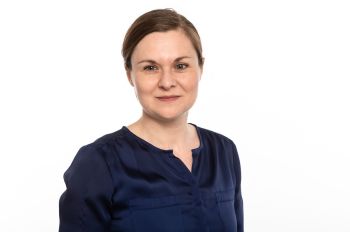Busting the Congestion: Why Megacities Need Infrastructure for Many Transportation Methods

“Traffic congestion is a terrible threat to our economy. The analogy is cardiovascular. If our bodies’ arteries got blocked, we have two choices: We can die, or we can surgically rebuild them in a new way.”
This introduction by Robert W. Galvin to Megacity Mobility, authored by Professor of Civil and Architectural Engineering Zongzhi Li with Adrian T. Moore and Samuel R. Staley in December 2021, lays out the urgency of addressing transportation problems in our largest cities.
According to a United Nations report, the world’s urban population grew more than 550 percent between 1950 and 2018, even faster than the rate of the global population growth during that time. As such, the number of megacities—cities with populations that are approaching or have exceeded 10 million inhabitants or more—has been increasing.
But much like how a city of 1 million people would not survive on the type of transportation system used in a village of 100 people, the transportation paradigms of megacities require some fundamental rethinking.
Megacity Mobility aims to provide a framework for this rethinking, with lessons for policymakers and stakeholders of urban transportation on how to apply “effective deployment of tactics, strategies, and facilities that will sustain and grow these megacities through the twenty-first century.”
“It describes how I think the transportation system should be developed and managed in the long run,” says Li.
With a nearly endless number of constraints and factors to consider and optimize when developing a transportation network, such as cost and environmental sustainability, the book makes the case for keeping mobility as an anchor.
Mobility is defined as “the ability and speed of people and goods to travel from one point to another point safely in the network,” and Li sees it as highly important in the economic sustainability of megacities.
The availability of physical space is tightly restricted in megacities, so Li advocates for a three-dimensional approach to transportation planning, making use of space below and above ground.
However, he says the key to doing this effectively is to build more pathways that provide uninterrupted transportation flow—that is, systems like freeways and railways where movement is not constantly starting and stopping for traffic lights or stop signs.
Li says this is a critical consideration, because sometimes adding more of the wrong type of transportation pathway can make traffic worse.
In Los Angeles, which has a freeway-based system, Li says adding more side roads could actually increase traffic congestion because it would direct more people away from existing uninterrupted flow pathways toward the newly built interrupted flow pathways.
“We have a full spectrum of solutions, but the applicability is location- and time-specific; you really need to find the correct match such that the problem can be addressed in a positive way,” says Li.
In a city such as Chicago and its metropolitan area, this means placing emphasis on a wide variety of transportation types—buses, light rail, cars, bikes, pedestrians, and more—and being thoughtful about building transportation infrastructure that allows all of these to effectively coexist.
In more car-centric cities, Li says it is important to consider ways to more efficiently and effectively use the existing lanes.
“We completely discourage single-occupancy vehicle usage, and we want to spread the travel almost evenly across 24 hours of a day,” says Li. “So we can promote solutions for travel demand management that consider where people will need to travel at what times and then create flexible working arrangements that spread out demand such as teleworking; flexible working hours via shifts of departure and arrival times; changing the number of hours in a work day; and adopting multiple work shifts during the day or week. We can also promote transit and shared vehicles to spread demand across multiple travel modes.”
This also means developing transportation infrastructure such as “queue jumpers” that keep buses out of traffic congestion through solutions such as dedicated lane space, creating a more efficient system overall.
“The efficient utilization of available transportation capacity by adopting technological innovations in physical transportation facility, vehicle, and user/nonuser components such as advanced roadway, bridge, and tunnel materials, and accelerated construction methods is essential to upkeep of megacity mobility,” says Li.
But even with these changes, Megacity Mobility says that all megacities will have to pursue multimodal solutions.
“Megacities do not have the luxury of becoming an ‘all-transit,’ ‘all-auto/private vehicle,’‘all-rail,’ or all-anything transportation city,” the authors write in the book. “Their economies are so diverse and broad that policymakers and planners need to avoid falling into a one-mode way of thinking.”
Equally important, says Li, is that transportation equity should be constantly improved to offer means of travel for economically disadvantaged residents and mobility-constrained and senior population groups.
In megacities in particular, a holistic transportation solution takes into account the transportation of cargo as well.
Using only trucks to transport goods can add to overall congestion, but expanding the modes of transportation for products to include more freight rails for long distances, drones for short distances, and delivery trucks for urban logistics into, within, and through the megacity area in a coordinated manner could increase the mobility of these systems.
Li says it’s important to approach transportation overall with practical considerations in mind, so Megacity Mobility offers guidance for transportation funding, financing, and budget allocation using asset management principles, including a discussion of general fee structures, partnerships between the public and private sectors on transportation development and management, data-driven performance analysis and predictions, and proactive strategies for construction, maintenance, and repair of transportation facilities in their service lifespans.
With broad and comprehensive considerations, Li has created Megacity Mobility with the aim of having it act as a guidebook to the facilitators of megacities worldwide.
Photo: The cover of the Megacity Mobility book co-written by Professor of Civil and Architectural Engineering Zongzhi Li




